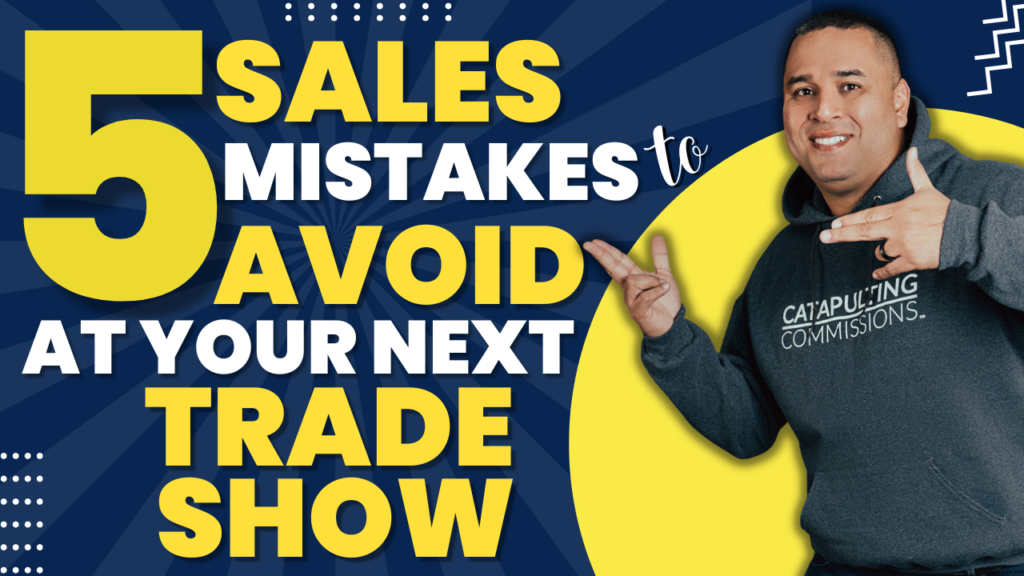At 130+ trade shows hosted annually, 75% of attendees are there to learn about and potentially purchase products. This is something you’ll see at county fairs as well, although the percentage of people looking to buy may be a bit lower. There’s something for everyone at a county fair, including those who come for food, fun, friends, family, and concerts. I get it. Not everybody at a county fair is coming to make a purchase.
The people who walk through the exhibit hall at a trade show are typically looking for something specific. Whether it’s a new product to introduce to their business, or simply information about what’s new in the industry, these attendees are taking the time to explore all that the trade show has to offer. By making the conscious decision to enter the hall, they are signaling that they are looking for something in particular and are likely to be interested in what the exhibitors have to say.
So in this blog, we’re going to treat the exhibit hall at the county fair and the general sales training from trade shows as one and the same.
I love to go to county fairs, exhibit halls, and trade shows. I love it for sport. I want to discover products that are out there, and I also want to see how people are selling, marketing, and call to action.
As I was walking down the Kern County Fair, I saw five mistakes that salespeople make. Let’s break them down:
1. Being overly aggressive
When you’re at a trade show, it’s important to be respectful when approaching potential customers. If you are overly aggressive in your approach to someone, you naturally create tension because this person’s natural reaction is to become defensive. For example, I was walking through the trade show with my family when I came across a vendor selling jewelry cleaning products. I ended up buying from their competitors. Why? Because not only did the saleslady told me to remove and see my watch, but she yelled at me after I subtly said no numerous times. And now she made a scene where people around are looking at me and looking at my watch. I was incredibly uncomfortable. There was another way to have that discussion.
When you see somebody you want to have a conversation with, you have to learn how to ask an open-ended question to get that person to stop and approach your booth. That’s it. There are a lot of other tricks and tips that we get people to the booth, but for this example, if you’re just going to shout at somebody, you better have a question, an open-ended question, and something that’s going to gauge a conversation. Sometimes a simple hello and getting acknowledgment before you ask the open-ended question is really helpful.
The competitor got me by saying, “excuse me, sir. Can I get your attention? How often do you clean your watch?”
“It’s a really nice watch, man. I’m pretty sure I could make it look better. Do you mind if I show you how?”
2. Never argue or put down your prospect
At a trade show, you only have a few minutes to make a meaningful impact and spark enough interest that someone says yes. If you spend that time arguing or insulting your prospect for a lack of knowledge about your product, you’re not going to win them over. Customers are having a conversation with you because they’re trying to get educated, so instead of arguing or putting them down, spend time listening. It’s the number one skill that salespeople should have.
Take a look at this example:
Buyer: Hey, isn’t this similar to the Theragun?
Salesperson 1: Yeah, but no. Are you interested in one?
Salesperson 2: What are you hoping to accomplish if you were to buy a Theragon?
I bought from salesperson 2, simply because he asked the right questions and didn’t make me feel silly like salesperson 1 did. So take the time to listen and get to know the buyer’s needs!
3. Do not sell from the start
I saw a lot of vendors jumping right away to sell. Someone in the fair was selling little magnetic bracelets. He told me how the bracelet can get rid of asthma, diabetes, chronic pain, etc. But fun fact, it was also listed behind him on the trade show displays. I paused at his booth because I thought the bracelet looked cool. That was it. And not once did he ask me a question. He could have asked me if I was experiencing any of the symptoms and just started selling. Needless to say, that conversation didn’t last long, nor did I buy one. So if you’re in the trade show and someone stops by to talk to you, don’t just start selling. Have a conversation!
4. Ditch the fishbowl lead magnet
You ever see those big fishbowls at trade shows where everyone drops in a business card, or they fill out a little brochure, for the promise that they may win a beautiful raffle prize. And the salesperson is going to call you a hundred times later. Lead magnets like that don’t work anymore.
As a salesperson, you shouldn’t want to spend your time calling somebody unless they’re genuinely interested in buying your product. You’re just giving yourself more work. So find out first, if the person who stopped at your booth is genuinely interested, then move that process along.
5. Don’t spend too much time with an unqualified prospect
At the fair, I saw a prospect say, “I don’t want to waste any more of your time. This is way over what I’m looking for.” And you as a salesperson have two choices right there a.) acknowledge that and realize there’s 20 other people around your booth or b.) you can fight for that 10% chance that you may close this person and give them buyer’s remorse because you close them so hard.
Remember that if someone’s telling you ‘no’ right now, they’re not telling you no forever.
And if someone is respectful enough to tell you, ‘hey, this is significantly over my budget. or I don’t want to spend any more time,’ take the opportunity and find a way to develop a relationship and move along to the next prospect. You could say, “Is it okay if I share some lower options for you, or are you really looking just for a complete set option?” or “here’s my business card.”
As a salesperson working at a booth, then you have to be a fast pace, with fast action. The moment a prospect isn’t the right fit or not genuinely interested, move on. Protect your time and spend time with people who are going to give you the biggest return on the investment of your time.
Acing the sales
You’re probably selling a great product, but you’re not getting the sales that you want.
It’s frustrating when you know you have a great product, but your sales just aren’t where they should be. You may be making some mistakes in your sales process that are costing you business.
The Catapult Commissions Academy can help. In this online course, I’ll show you how to improve your sales process and start getting more sales! Register here







